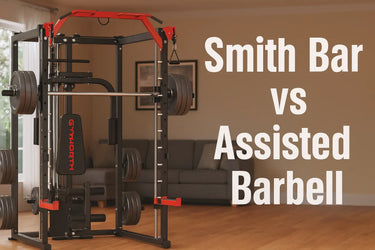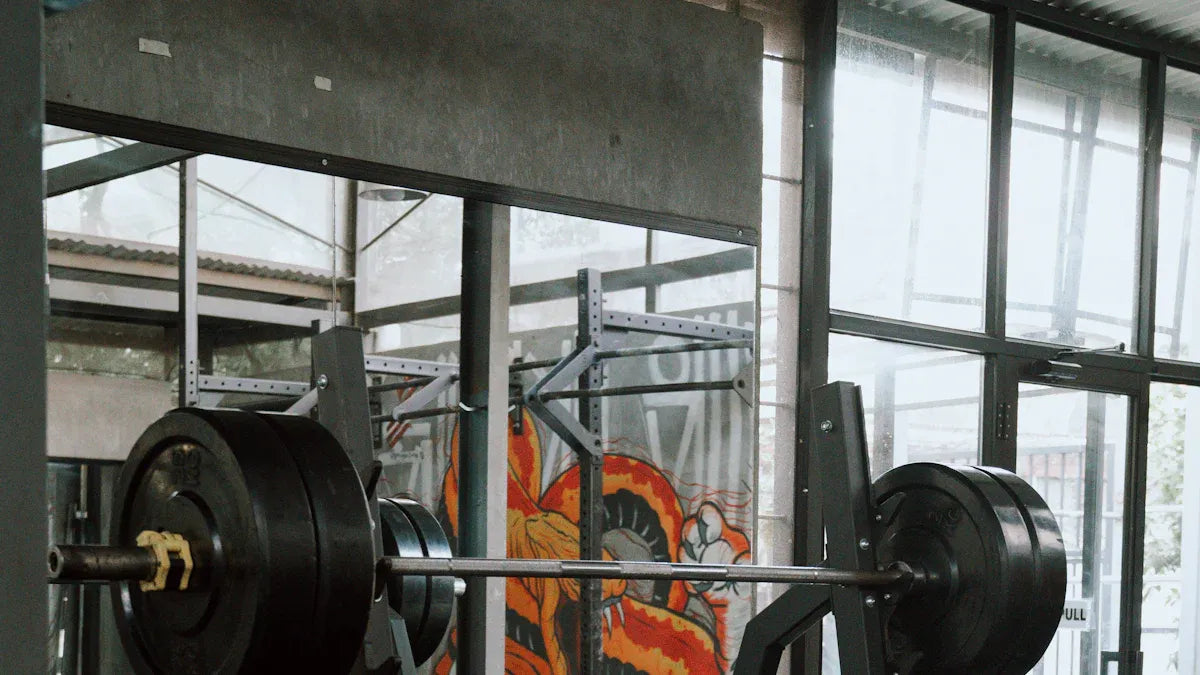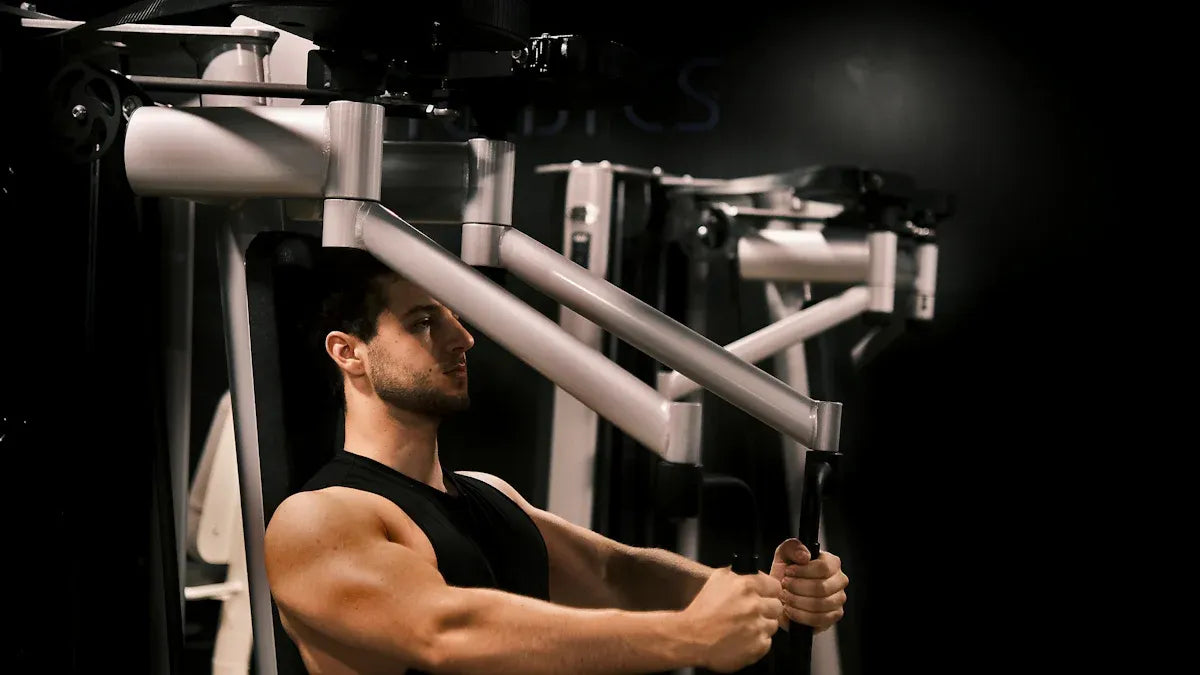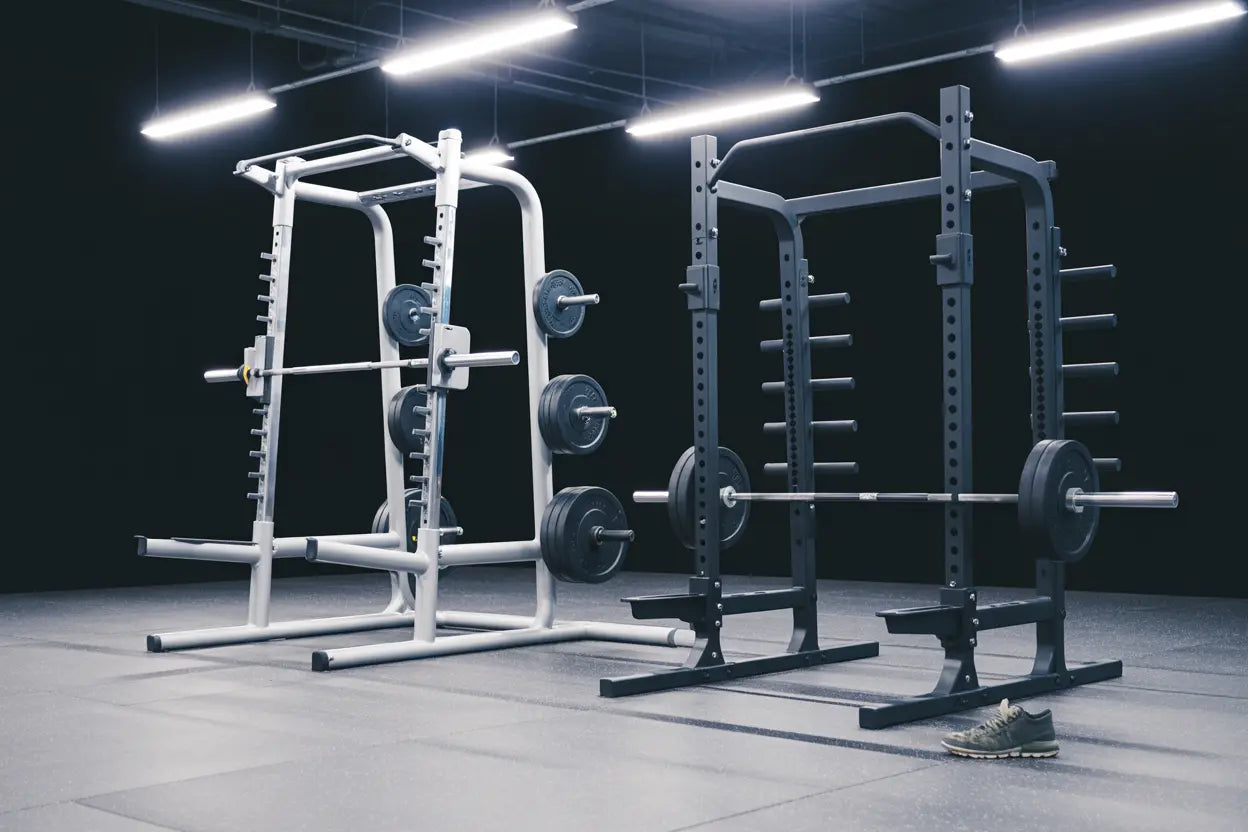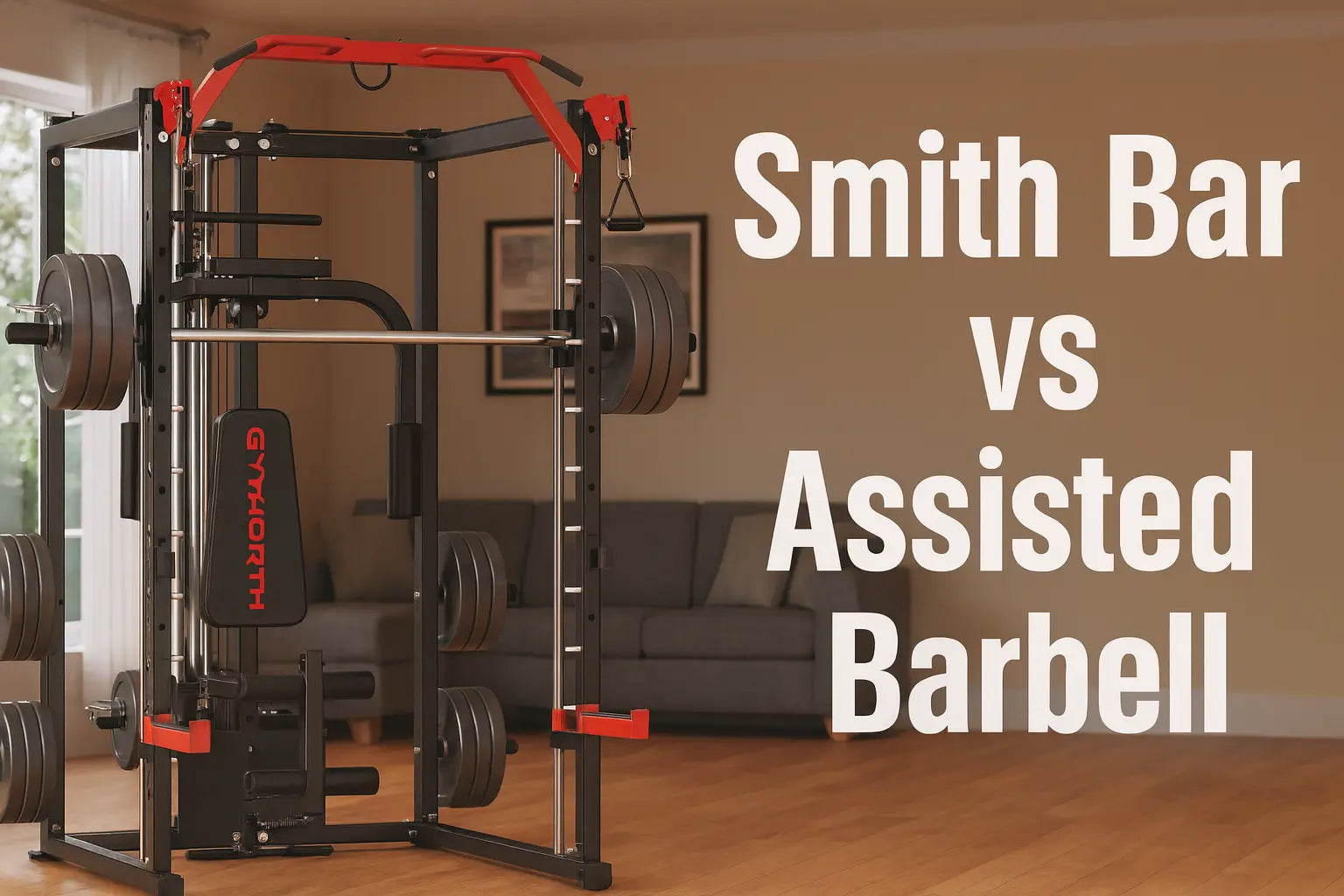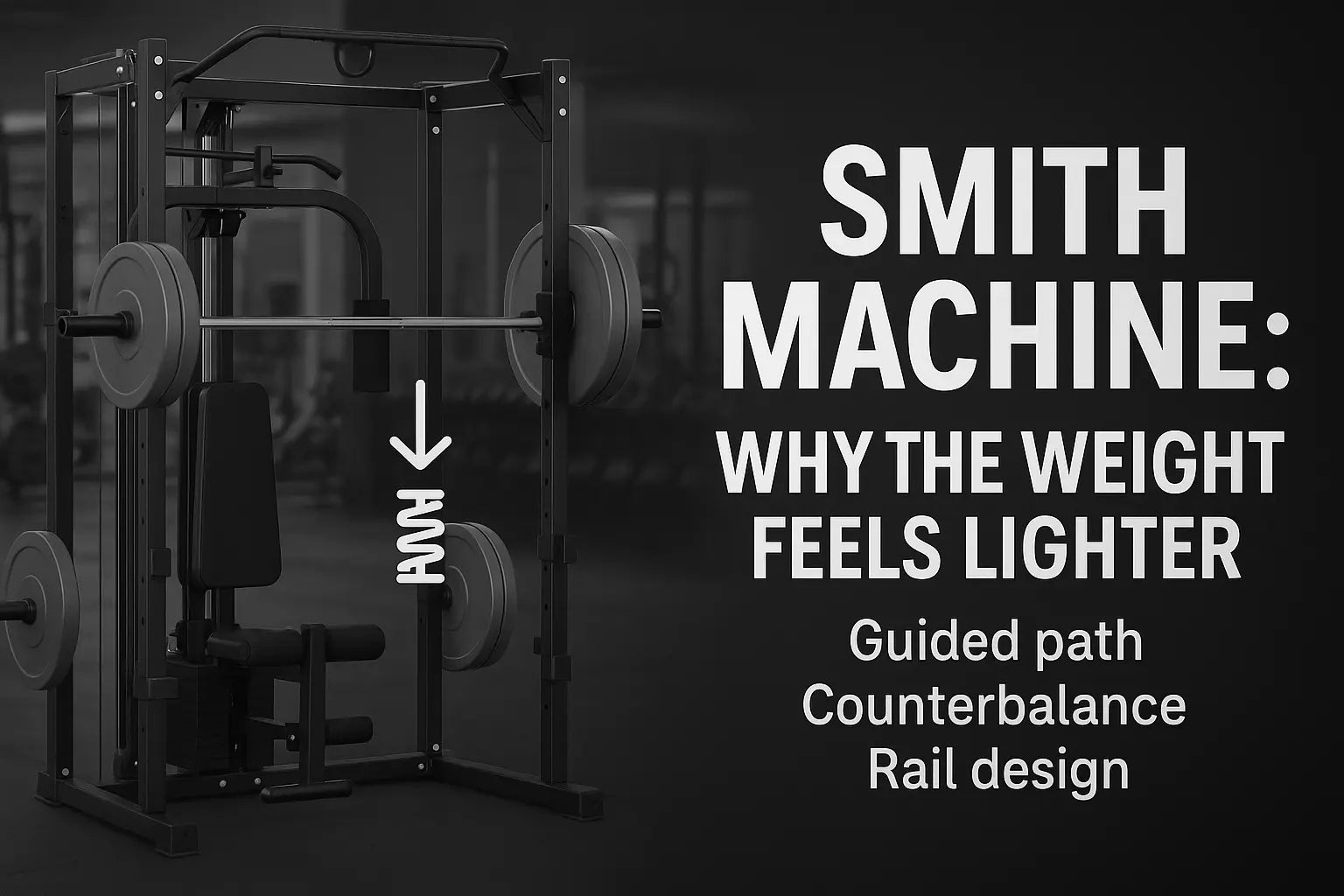Walk into any gym and you’ll likely see people using the Smith machine. Some call the bar on it a “Smith bar,” while others refer to it as an “assisted barbell.” The terms sound similar and are often used interchangeably, but do they mean the same thing? Or is there a real difference between the two?
A Smith bar is the fixed barbell that moves along the guided rails of a Smith machine, while an assisted barbell refers to the same bar when a counterbalance system makes it feel lighter. Let's dig in!
What Is a Smith Machine Bar?
A Smith bar is the barbell attached to a Smith machine. Unlike a free-weight Olympic barbell that moves in all directions, the Smith bar runs along fixed vertical or slightly angled steel rails. This means the path of motion is controlled. The Smith bar is fixed within these steel rails, ensuring a fixed bar path for safety and control.
Key features of a Smith bar:
-
Guided rails: The bar only moves up and down (or at a fixed angle), keeping the lift stable.
-
Safety hooks: The bar can be rotated into a notch at almost any point, allowing you to rack the weight instantly without a spotter.
-
Weight: While a standard Olympic barbell weighs 45 lbs (20 kg), most Smith bars are lighter—anywhere from 15 to 25 lbs, though some are closer to 45 lbs.
-
Purpose: Designed to make lifts safer, especially for beginners or people training alone.
In short, the Smith bar is the defining feature of the Smith machine: a guided barbell built for stability and safety.
What Is an Assisted Barbell?
The term assisted barbell usually refers to the same Smith bar, but with one key distinction: the assistance of a counterbalance system.
Many Smith machines have built-in pulleys or counterweights attached to the bar. These mechanisms reduce the effective weight you feel when lifting. For example, if the actual bar weighs 20 lbs, the counterbalance system might offset 10 lbs, making it feel like you’re only lifting 10 lbs.
How an assisted barbell works:
-
Counterbalance system: Pulleys and weights offset part of the bar’s mass.
-
Reduced load: The bar feels lighter than its real weight.
-
Accessibility: Beginners, older adults, and people in rehab can train safely with lighter resistance.
In essence, the “assisted barbell” isn’t a different piece of equipment—it’s just a Smith bar with its counterbalance effect emphasized.
Key Differences Between Smith Bar and Assisted Barbell
While both terms point to the same bar on the Smith machine, the difference lies in emphasis:
|
Feature |
Smith Bar |
Assisted Barbell |
|---|---|---|
|
Definition |
Barbell fixed to Smith machine rails |
Smith bar with counterbalance system highlighted |
|
Weight |
15–45 lbs (varies by model) |
Feels lighter than actual due to counterweights |
|
Focus |
Stability and safety |
Ease of lifting and reduced effort |
|
Best For |
Beginners, solo lifters, controlled strength training |
Rehab, very new lifters, lighter resistance workouts |
👉 Put simply: every assisted barbell is a Smith bar, but not every Smith bar is assisted.
Pros and Cons of Each
Smith Bar
✅ Pros
-
Provides stability and safety.
-
Easy to rack without a spotter.
-
Useful for muscle isolation.
-
Built-in safety mechanisms and adjustable safety catches allow for safer solo workouts.
-
Guided bar path offers enhanced control during lifts.
❌ Cons
-
Less stabilizer muscle activation compared to free weights.
-
Fixed path may not match everyone’s natural movement, stressing joints.
-
Can create a false sense of security, leading users to underestimate proper form and safety precautions.
Assisted Barbell
✅ Pros
-
Makes lifting more accessible to beginners and those in rehab.
-
Encourages confidence by reducing perceived weight.
-
Ideal for lighter resistance training.
-
Reduces the risk of losing control during lifts, providing added safety especially for heavy or intense workouts.
❌ Cons
-
Doesn’t reflect real-world strength since bar feels lighter.
-
The assisted barbell does not fully eliminate the risks associated with heavy lifting, such as potential injuries.
-
Transitioning to free weight exercises can be challenging, as they require greater stability and engage more muscle groups.
-
Too much reliance may slow progress.
Training Applications
When to Use a Smith Bar
The Smith bar is useful for exercises where stability and safety are priorities:
-
Squats: Especially for beginners learning the squatting movement without worrying about balance.
-
Bench Presses: The Smith bar is safer to rack and unrack when training alone and is useful for bench presses.
-
Shoulder Presses: The guided motion reduces risk of injury from poor bar path, but shoulder presses on the Smith machine can have limitations due to restricted movement and potential strain on the shoulder joints.
It’s also a good tool for hypertrophy (muscle growth) because you can isolate specific muscle groups without engaging as many stabilizers. The Smith bar allows you to target specific muscle groups safely, making it ideal for maintaining proper form during heavy lifting.
When to Use an Assisted Barbell
The assisted version (lighter feel due to counterbalance) is ideal for:
-
Rehabilitation: People recovering from injuries who need very gradual loading.
-
Beginners: Those who can’t yet handle a full Olympic bar.
-
Technique practice: Learning proper form without being overwhelmed by heavy weight.
The assisted barbell provides added stability, making it ideal for solo workouts and for those who need extra support.
Common Misconceptions
-
“The Smith bar always weighs 45 lbs.”
False—many weigh much less, often 15–25 lbs, and may feel even lighter with assistance. The actual weight of the Smith machine barbell can vary by brand and model, and you can adjust the total load by adding weight plates. -
“Assisted barbell means it’s a different bar.”
Not really—it’s the same Smith bar, but the assistance is highlighted. -
“You can build just as much strength on an assisted barbell as with free weights.”
Not entirely true. While you can build strength and muscle, stabilizer muscles don’t work as hard, so transferring strength to free weights isn’t one-to-one.
Which One Should You Use?
-
Smith Bar: Great for lifters who want stability but still want to feel closer to real barbell weight. Suitable for a wide range of fitness levels, from beginners transitioning toward free weights to advanced lifters seeking increased stability during heavy training.
-
Assisted Barbell: Perfect for absolute beginners, older adults, or those recovering from injuries who need the lightest possible resistance to train safely. Also ideal for individuals with specific fitness needs, allowing them to tailor their workouts to their unique goals and capabilities.
For most lifters, the Smith bar (with or without assistance) is a tool—not a replacement. It works best when combined with free weights to build both stability and strength.
Conclusion
The terms Smith bar and assisted barbell are closely related, often referring to the same bar on the Smith machine. The difference lies in emphasis:
-
The Smith bar highlights the fixed, guided nature of the lift.
-
The assisted barbell highlights the counterbalance that makes the bar feel lighter.
Both make lifting safer and more accessible, but they also reduce stabilizer activation compared to free weights. Use them as part of a balanced program—especially in a home gym—where the Smith bar and assisted barbell can be valuable tools for building muscle mass as part of a comprehensive workout routine. However, remember that free-weight training is still the gold standard for building functional strength.
If you’re new to lifting, start with the Smith bar or assisted barbell to learn form and build confidence. But as you progress, incorporate free weights to challenge your muscles in a more natural, unrestricted way.
Reference
- Schick, E. E., Coburn, J. W., Brown, L. E., Judelson, D. A., Khamoui, A. V., Tran, T. T., & Uribe, B. P. (2010). A comparison of muscle activation between a Smith machine and free weight bench press. Journal of strength and conditioning research, 24(3), 779–784. https://doi.org/10.1519/JSC.0b013e3181cc2237
Vanswe’s Top Picks
Latest Articles

